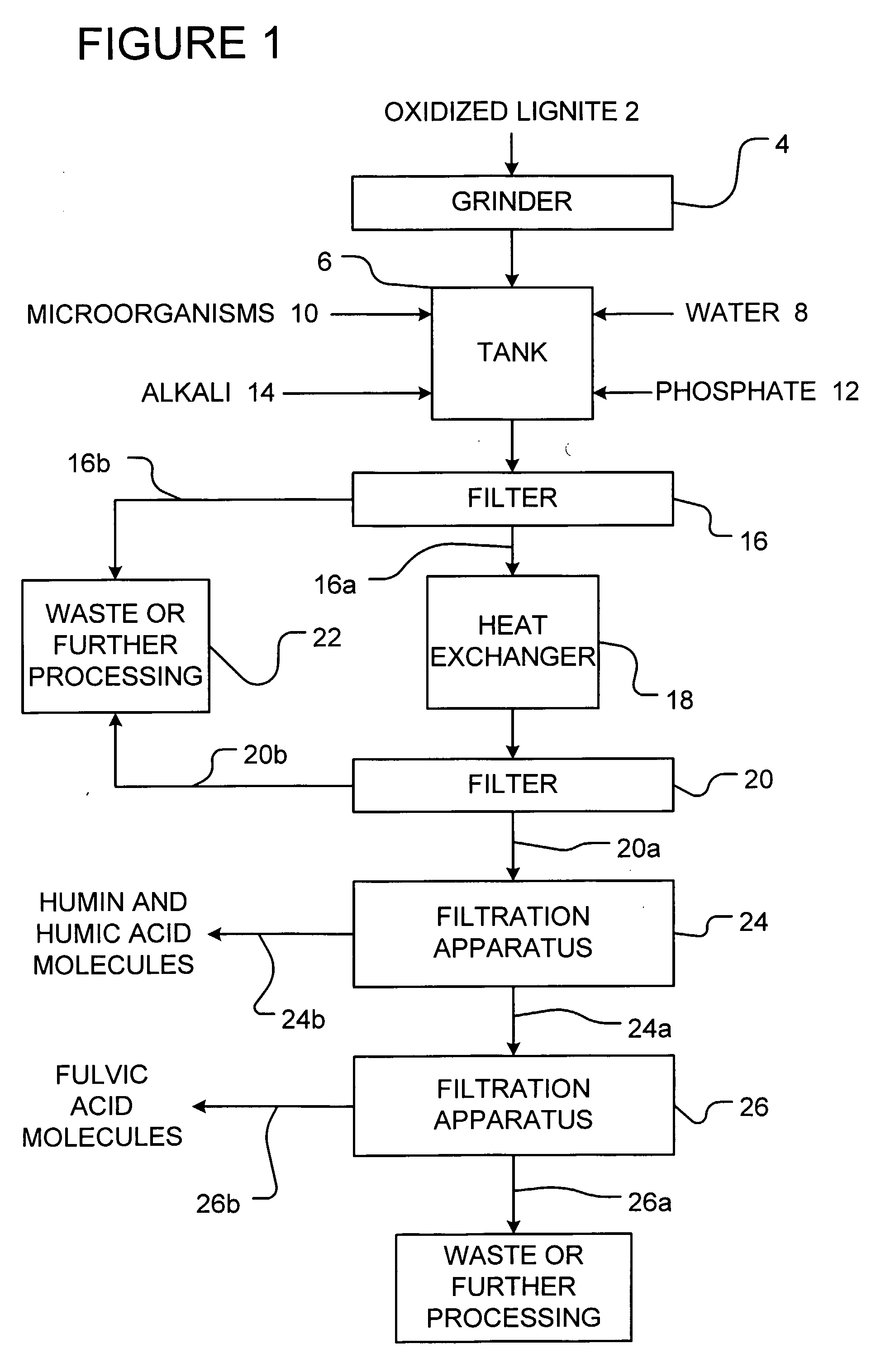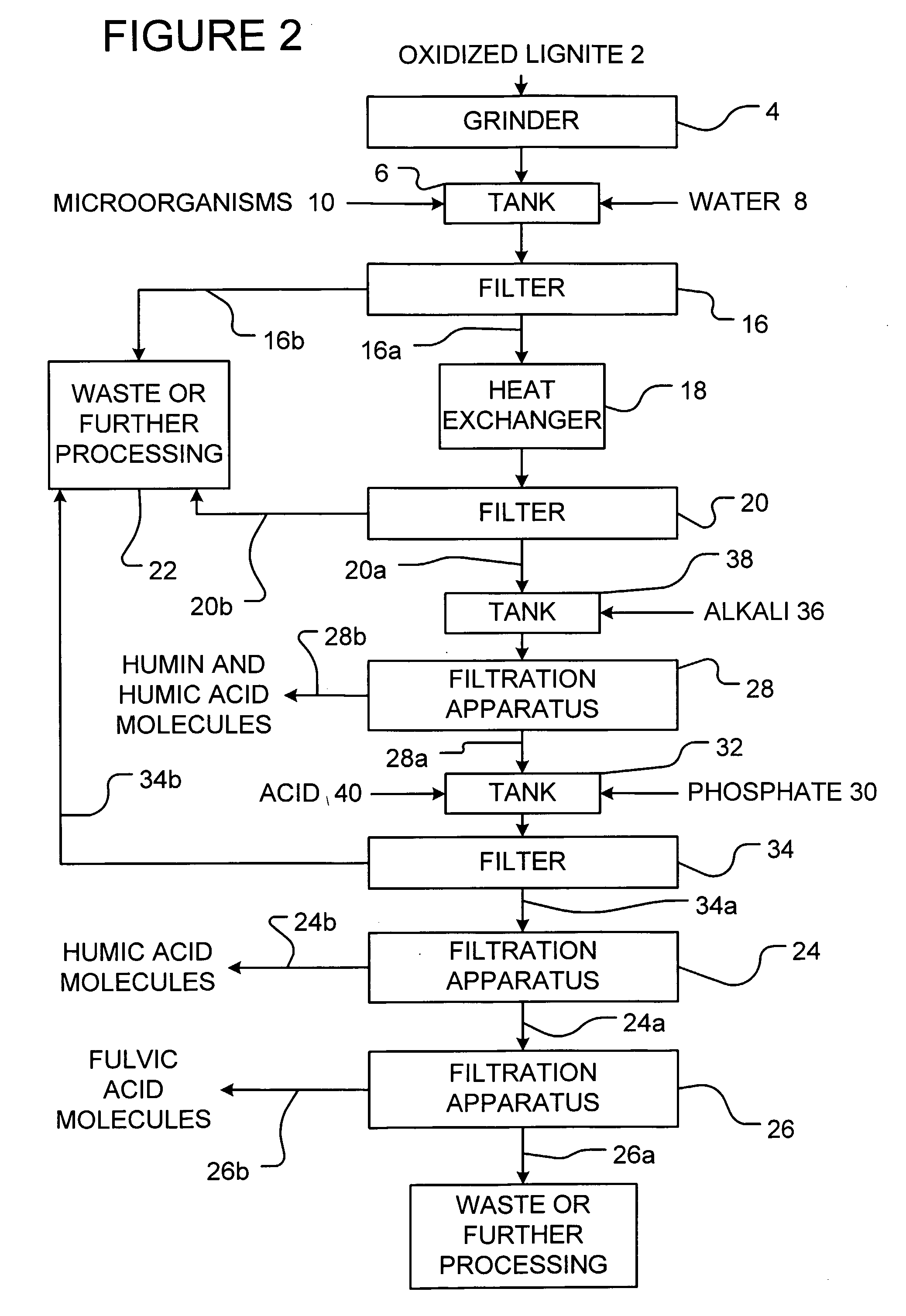Method for Extracting Fulvic Acid Molecules
a technology of fulvic acid and molecules, which is applied in the direction of inorganic chemistry, phosphorus oxyacids, carboxylic compound separation/purification, etc., can solve the problems of large scale chemical extraction methods that are inconsistent with today's increased environmental awareness, insoluble fractions of humic acid, and high cost of large amounts of acids and bases to carry out chemical extraction, etc., to reduce the water content of the solution
- Summary
- Abstract
- Description
- Claims
- Application Information
AI Technical Summary
Benefits of technology
Problems solved by technology
Method used
Image
Examples
Embodiment Construction
[0073]The following example is presented by way of illustration and not by way of limitation.
[0074]900 gallons of water were mixed with 1000 lbs. of leonardite which was previously ground to an average particle size of 6 microns. 50 lbs. of well-aged compost was added in order to inoculate the mixture with microorganisms. The mixture was then digested under aeration for 3 days. Then, 20 lbs of potassium phosphate was added to the mixture. The pH of the mixture was slowly increased to between 5 to 8 by the addition of 100 lbs. of sodium bicarbonate to precipitate out iron and aluminum as insoluble phosphate compounds. The mixture was then filtered using a 200 mesh screen and allowed to settle for 6 days. The mixture was then heated at a temperature of about 60° C. and air sparged for 10 minutes. The heated mixture was then passed through a 20 micron filter and retained solids were removed. The filtrate was then passed through an 8000 Dalton ultrafiltration membrane array. The retenta...
PUM
| Property | Measurement | Unit |
|---|---|---|
| Temperature | aaaaa | aaaaa |
| Temperature | aaaaa | aaaaa |
| Length | aaaaa | aaaaa |
Abstract
Description
Claims
Application Information
 Login to View More
Login to View More - R&D
- Intellectual Property
- Life Sciences
- Materials
- Tech Scout
- Unparalleled Data Quality
- Higher Quality Content
- 60% Fewer Hallucinations
Browse by: Latest US Patents, China's latest patents, Technical Efficacy Thesaurus, Application Domain, Technology Topic, Popular Technical Reports.
© 2025 PatSnap. All rights reserved.Legal|Privacy policy|Modern Slavery Act Transparency Statement|Sitemap|About US| Contact US: help@patsnap.com



